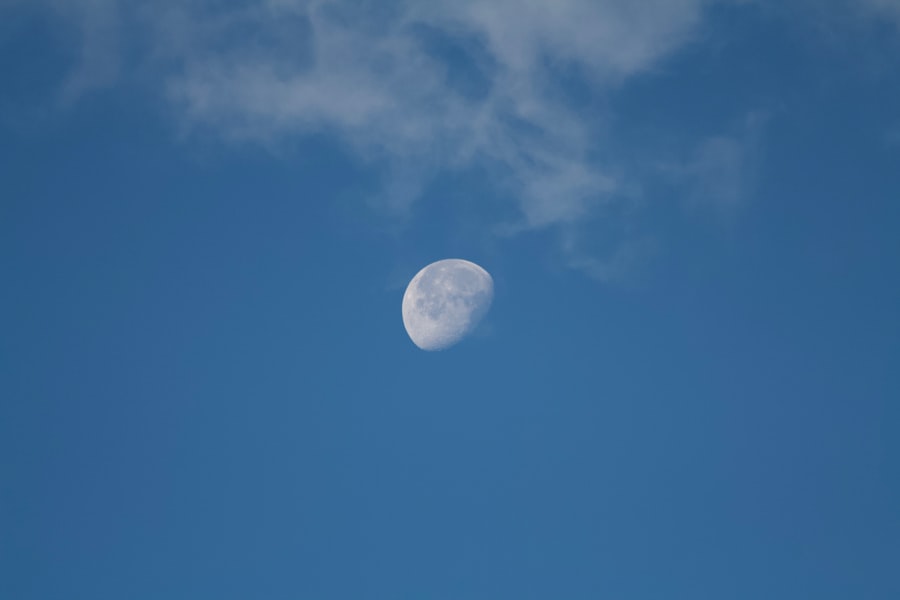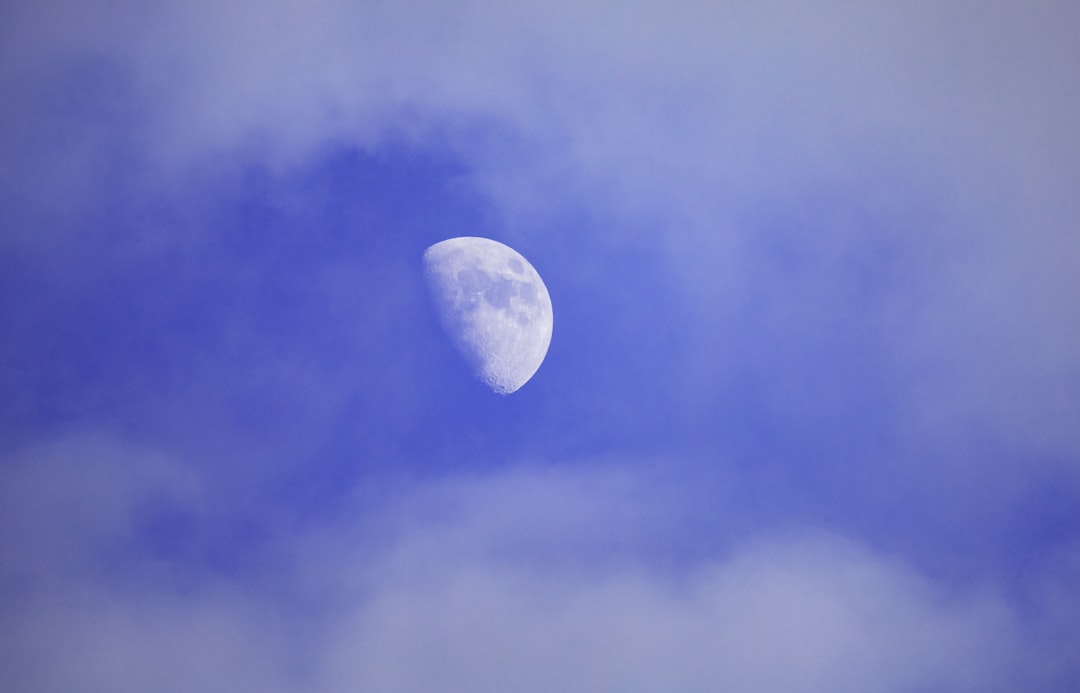The Moon has long captivated the imagination of humanity, serving as a celestial companion that has inspired countless myths, legends, and scientific inquiries. As Earth’s only natural satellite, it holds a unique position in the solar system, acting as a stepping stone for future exploration beyond our planet. The Moon’s proximity to Earth makes it an ideal candidate for initial missions aimed at venturing into deeper space.
Its relatively close distance allows for shorter travel times and the opportunity to test technologies and strategies that will be essential for future interplanetary missions. Moreover, the Moon’s surface offers a wealth of scientific opportunities.
The Moon’s lack of atmosphere and geological activity preserves ancient records of the solar system’s history, making it an invaluable resource for scientists seeking to understand not only the Moon itself but also the broader cosmos. As humanity looks to the stars, the Moon stands as a crucial gateway, providing both a physical and metaphorical bridge to the vast expanse of space that lies beyond.
Key Takeaways
- The Moon serves as a gateway to the stars, providing a potential launch pad for further space exploration.
- Exploring the Moon is important for understanding the history of our solar system and the potential for future space missions.
- The Moon’s unique characteristics, such as its lack of atmosphere and extreme temperature variations, make it an ideal location for scientific research and testing new technologies.
- There is potential for lunar colonization, with plans to establish permanent human settlements on the Moon in the near future.
- The Moon is a potential source of resources, including water ice and rare minerals, which could be utilized for future space missions and sustaining human life.
The Importance of Exploring the Moon
Exploring the Moon is not merely an endeavor of curiosity; it is a critical step in humanity’s quest for knowledge and survival. The Moon serves as a testing ground for technologies that will be necessary for future missions to Mars and beyond. By establishing a presence on the Moon, space agencies can refine life support systems, habitat construction techniques, and resource utilization strategies that will be vital for long-duration space travel.
This groundwork is essential for ensuring that future missions are safe and sustainable. Additionally, lunar exploration fosters international collaboration and inspires future generations. As nations come together to share knowledge and resources, they create a sense of unity in the pursuit of common goals.
The excitement surrounding lunar missions can ignite interest in STEM (science, technology, engineering, and mathematics) fields among young people, encouraging them to pursue careers that contribute to humanity’s understanding of the universe. In this way, exploring the Moon is not just about reaching new frontiers; it is about building a foundation for a collaborative and innovative future.
The Moon’s Unique Characteristics

The Moon possesses several unique characteristics that distinguish it from other celestial bodies in our solar system. One of its most notable features is its synchronous rotation with Earth, meaning that the same side of the Moon always faces our planet. This phenomenon creates a fascinating dynamic between the two bodies and has led to extensive study of the lunar far side, which remains largely unexplored compared to the near side.
The far side’s rugged terrain and lack of human interference make it an intriguing target for scientific research. Another remarkable aspect of the Moon is its geological history. Unlike Earth, which is constantly reshaped by tectonic activity and erosion, the Moon’s surface has remained relatively unchanged for billions of years.
This preservation allows scientists to study impact craters and volcanic features that provide insights into the early solar system. Furthermore, the Moon’s regolith—its fine dust and rocky debris—contains valuable information about its composition and formation processes. These unique characteristics make the Moon an essential subject of study for understanding not only its own history but also that of other celestial bodies.
The Potential for Lunar Colonization
| Metrics | Data |
|---|---|
| Lunar Surface Gravity | 1.622 m/s² |
| Water Ice Deposits | Confirmed in lunar craters |
| Solar Power Potential | 14-18 days of continuous sunlight |
| Regolith Composition | Rich in oxygen, silicon, and metals |
| Radiation Levels | Higher than on Earth, but manageable |
The concept of lunar colonization has transitioned from science fiction to a plausible reality as advancements in technology continue to unfold. Establishing a permanent human presence on the Moon could serve multiple purposes, from scientific research to resource extraction. A lunar colony could act as a base for further exploration of Mars and other planets, providing a platform for launching missions deeper into space.
Moreover, lunar colonization could lead to significant advancements in human adaptability and resilience in extraterrestrial environments. By developing habitats that can withstand the harsh conditions of the Moon—such as extreme temperatures, radiation exposure, and micrometeorite impacts—scientists can gain valuable insights into how humans might live on other planets.
The challenges posed by lunar colonization could drive innovation in life support systems, agriculture in space, and sustainable living practices that may one day be applied on Mars or beyond.
The Moon as a Source of Resources
The Moon is not just a barren rock; it is rich in resources that could be harnessed for both lunar habitation and Earth-based applications. One of the most promising resources is water ice, which has been detected in permanently shadowed craters at the lunar poles. This water could be used to support human life through drinking water and oxygen production or even converted into rocket fuel for missions beyond the Moon.
The ability to utilize local resources would significantly reduce the costs associated with transporting supplies from Earth. In addition to water, the Moon is believed to contain valuable minerals such as helium-3, which has potential applications in nuclear fusion energy production. Helium-3 is rare on Earth but abundant on the lunar surface, making it an attractive option for future energy solutions.
By tapping into these resources, humanity could not only sustain lunar colonies but also create a new economy based on extraterrestrial mining and resource management.
The Role of the Moon in Space Exploration

The Moon plays a pivotal role in shaping humanity’s approach to space exploration. As the first celestial body visited by humans during the Apollo missions, it set a precedent for future endeavors beyond Earth. The lessons learned from lunar exploration have informed subsequent missions to Mars and other destinations within our solar system.
The Moon serves as a proving ground where technologies can be tested and refined before being deployed on more distant missions. Furthermore, the Moon’s strategic location makes it an ideal launch point for interplanetary travel. With lower gravity than Earth, launching spacecraft from the lunar surface requires less energy, making it easier to reach destinations like Mars or asteroids.
This advantage could lead to more efficient exploration strategies and open up new possibilities for scientific discovery throughout the solar system.
Challenges of Lunar Exploration
Despite its allure, lunar exploration is fraught with challenges that must be addressed before establishing a permanent presence on the Moon. One significant hurdle is the harsh environment itself; extreme temperatures can swing from scorching heat during the day to frigid cold at night. Additionally, radiation exposure poses serious risks to human health, necessitating robust shielding solutions for habitats and equipment.
Logistical challenges also abound when it comes to transporting materials and personnel to the Moon. Developing reliable transportation systems that can deliver supplies while ensuring crew safety is paramount. Furthermore, establishing sustainable life support systems that can function independently from Earth will be crucial for long-term habitation.
Overcoming these challenges will require innovative engineering solutions and international collaboration among space agencies.
The Moon’s Impact on Scientific Research
The scientific potential of the Moon extends far beyond its surface geology; it offers insights into various fields such as astronomy, climatology, and planetary science. Observatories placed on the lunar far side could provide unparalleled views of deep space without interference from Earth’s atmosphere or radio signals. This capability would enhance our understanding of cosmic phenomena such as black holes, dark matter, and gravitational waves.
Moreover, studying lunar samples returned from missions can shed light on Earth’s own history and evolution. By analyzing isotopes and mineral compositions, scientists can draw parallels between our planet and its satellite, leading to a deeper understanding of planetary formation processes across the solar system. The Moon serves as a time capsule that holds clues about not only its own past but also that of Earth and other celestial bodies.
The Moon’s Potential for Tourism
As technology advances and space travel becomes more accessible, the prospect of lunar tourism emerges as an exciting possibility. The idea of visiting the Moon has captured public imagination since the Apollo missions, and now private companies are working towards making this dream a reality. Lunar tourism could offer unique experiences such as walking on the Moon’s surface, witnessing Earthrise from its horizon, or even staying in luxury habitats designed for short-term visitors.
The economic implications of lunar tourism are significant as well; it could create new industries focused on space travel and hospitality while generating revenue for further exploration initiatives. As more people venture beyond Earth’s atmosphere, they will bring back stories and experiences that inspire future generations to pursue careers in space-related fields. This burgeoning industry could transform how humanity views its place in the universe.
The Future of Lunar Exploration
The future of lunar exploration is bright with promise as various nations and private entities ramp up their efforts to return to the Moon. NASA’s Artemis program aims to land “the first woman and the next man” on the lunar surface by 2024, paving the way for sustainable exploration by establishing a long-term presence on the Moon by 2028. Other countries like China and India are also making strides in their lunar programs, indicating a global interest in returning to our nearest neighbor.
As these initiatives unfold, they will likely lead to increased collaboration among nations and private companies alike. The establishment of international agreements regarding lunar resource utilization will be essential in ensuring that exploration efforts are conducted responsibly and equitably. With advancements in technology and growing interest in space exploration, humanity stands on the brink of a new era where the Moon becomes an integral part of our journey into the cosmos.
The Moon’s Role in Advancing Space Technology
The challenges posed by lunar exploration have historically driven advancements in technology that benefit not only space travel but also life on Earth. Innovations developed for lunar missions have led to breakthroughs in materials science, robotics, telecommunications, and environmental monitoring systems. For instance, technologies designed for life support systems on the Moon have found applications in remote areas on Earth where access to clean water or energy is limited.
Furthermore, advancements in propulsion systems developed for lunar missions may pave the way for more efficient spacecraft capable of reaching distant planets faster than ever before. As humanity continues to push boundaries through lunar exploration, these technological advancements will have far-reaching implications across various sectors—ultimately enhancing life on Earth while preparing humanity for its next great adventure among the stars.
The concept of the moon as the ultimate high ground has intrigued strategists and scientists alike, offering a vantage point that could revolutionize both military and scientific endeavors. The moon’s unique position allows for unparalleled observation and communication capabilities, making it a strategic asset in space exploration and defense. For a deeper understanding of the strategic importance of celestial bodies, you can explore a related article on the topic by visiting this page. This article delves into the historical and contemporary significance of controlling high ground, both on Earth and beyond, providing a comprehensive analysis of why the moon holds such a pivotal role in future space endeavors.
WATCH THIS! 🚀 Why The Moon Is The Next Battlefield: The Geopolitics of Cislunar Space
FAQs
What is the significance of the moon as the ultimate high ground?
The moon is considered the ultimate high ground because of its strategic importance for space exploration, scientific research, and potential future human settlement.
How does the moon’s position make it the ultimate high ground?
The moon’s position in space provides a vantage point for observing Earth and the rest of the solar system, making it an ideal location for scientific observation and exploration.
What advantages does the moon offer as the ultimate high ground?
The moon’s low gravity, lack of atmosphere, and proximity to Earth make it an ideal location for launching missions to other parts of the solar system, as well as for potential resource extraction and scientific research.
How does the moon’s high ground status impact future space exploration?
The moon’s status as the ultimate high ground has led to increased interest in establishing a permanent human presence on the moon, as well as using it as a staging ground for future missions to Mars and beyond.
What are the potential challenges of utilizing the moon as the ultimate high ground?
Challenges of utilizing the moon as the ultimate high ground include the harsh lunar environment, the need for advanced technology and infrastructure, and the high cost of establishing and maintaining a presence on the moon.
